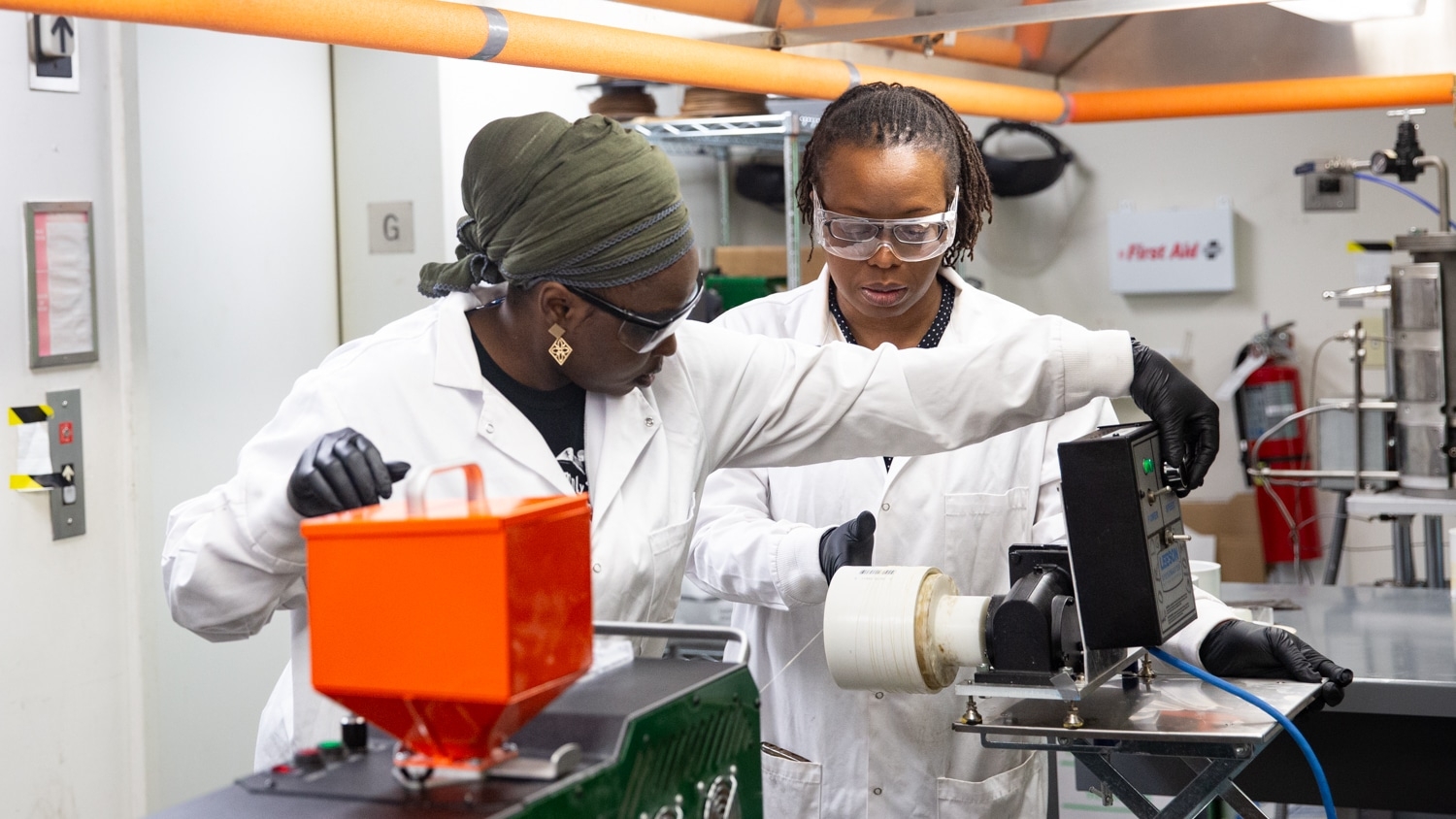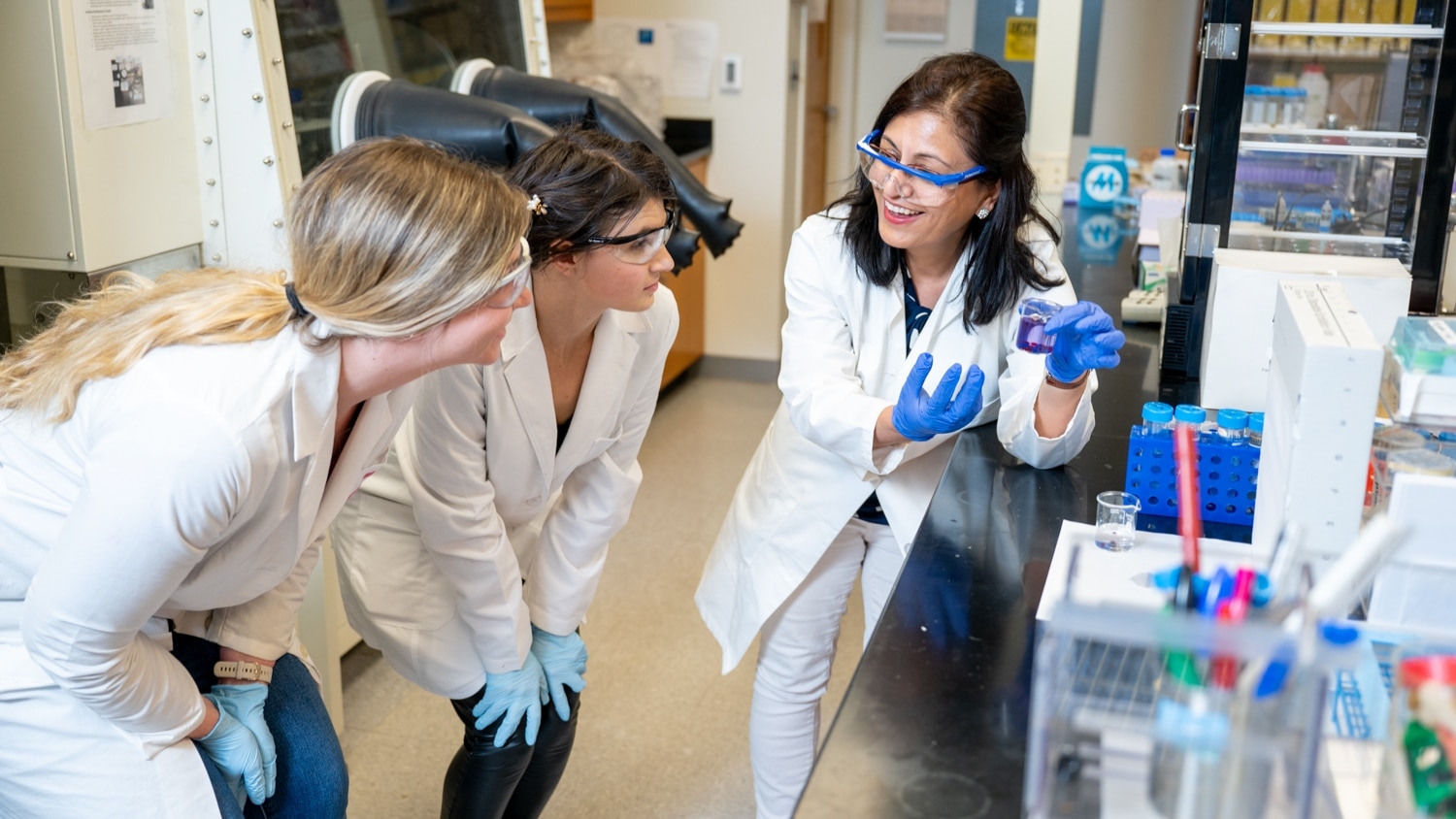The Dickey Group goes digital with virtual lab tour
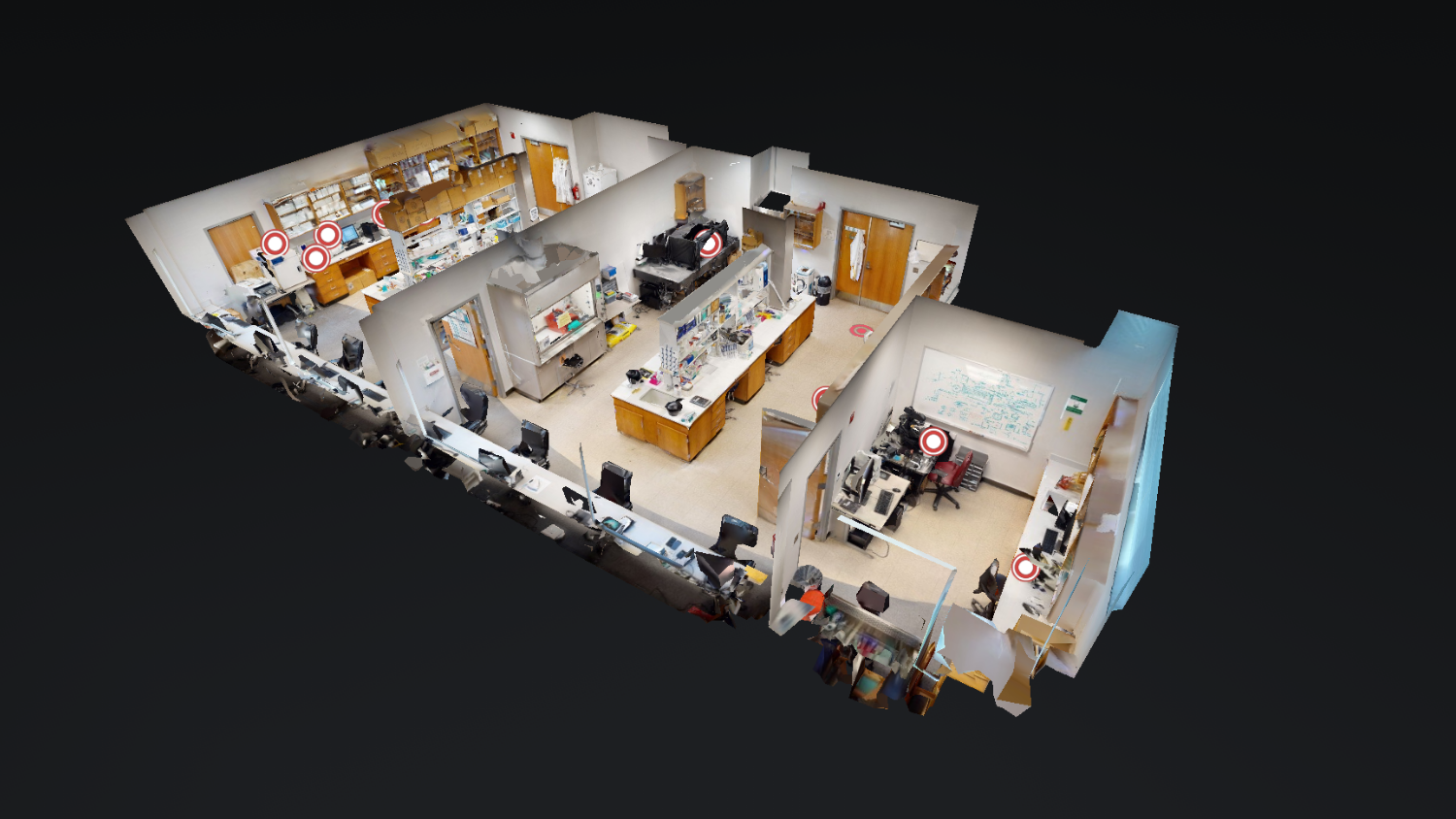
This fall, DELTA is excited to offer DELTA Express Grants, three new funding opportunities for faculty and instructors dedicated to applying learning technology in innovative, collaborative ways.
One of the new grants we’re offering is the Virtual Tours Grant, which assists faculty in filming or capturing an immersive educational environment (indoors or outdoors) to create an engaging way to work with course content. DELTA has extensive experience creating virtual tours, whether it’s in a North Carolina feed mill, a dairy farm in Ethiopia or the NC State Memorial Belltower.
Michael Dickey, university faculty scholar and founder of the Dickey Group, needed a way to make their laboratory accessible and navigable. The Dickey Group studies soft materials such as liquid metals, gels, and polymers and hosts undergraduates, grad students and visiting scholars from around the world to make this possible.
With many students and scholars using the group’s lab at various times, Dickey wanted an easy virtual way to introduce people to the lab and its equipment. He contacted DELTA Creative Director Mike Cuales, who helped him coordinate a point-by-point Matterport tour of his lab spaces. Designed for the real estate industry, Matterport scans create immersive 3D digital twins of a real-world space.
In spring 2021, student worker Parker Mitchell traveled to the Dickey Labs on Centennial Campus with a Matterport camera and captured 360° views of the spaces, including the lab’s equipment and where it lives.
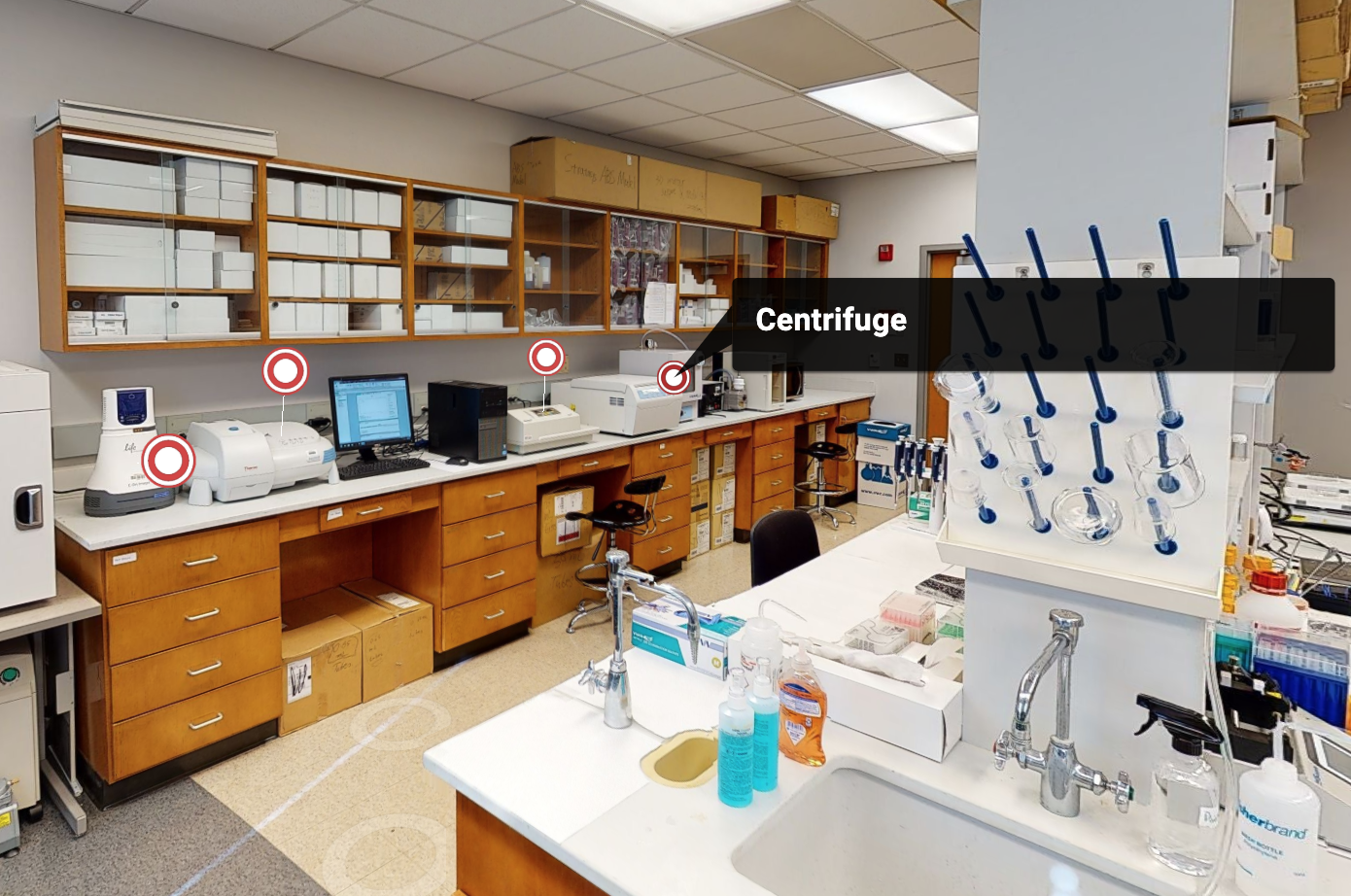
Finished Matterport tours often feature text annotations to provide context about certain features of a space. Dickey hoped to include detailed descriptions of the equipment in his lab to inform new students and scholars using the space, but understood that in a working lab, things often move from place to place. To help keep the virtual tour as up-to-date as possible, Dickey and his team chose to use some of the text annotations to provide links to Google Slides presentations on various types of equipment, which include information such as model numbers, training videos, manual links and more.
“The students created Google Slides, and the nice thing about using them is that if we get a new piece of equipment or want to add something, we can always add it to the Google Slides and it will update the tour automatically,” Dickey says.
The students also took this a step further and created a general map of the lab, so based on where you are in the virtual tour, you can find pictures of what’s inside cabinets or drawers. Dickey says this is especially useful for lab workers trying to locate certain tools, and it gives him peace of mind that they are prepared to succeed while they are in the lab.
The tour also prepares students and scholars who have yet to visit the lab in person to hit the ground running when they arrive. Dickey expresses hope that students will explore the lab and its contents before going to the lab in person. The tour allows students to learn more about items in the lab including the instruction manual and other aspects they are interested in.
This has been especially helpful during the COVID-19 pandemic, which kept Dickey and his team away from campus on a full-time basis. Additionally, the lab has had many students come and go over the years. Typically when students graduate, some of their knowledge leaves with them. The virtual tour and live annotations ensure continuity in lab instructions and insights over time.
Overall, the tour has brought efficiency and convenience to Dickey’s lab operations.
“When I’m meeting with students, there’s nothing keeping us from getting up and walking to the lab, but sometimes it just takes 10 seconds to use the virtual environment to point out useful equipment. You say ‘Oh yeah, it’s this red thing here, that’s the thing you need to use,’ and there’s no need to even get up from your seats,” Dickey notes.
In addition to teaching graduate students, Dickey spends a lot of time fundraising and recruiting students from all over the world to join the Dickey Group. Under normal conditions, the group hosts an in-person recruiting weekend where they bring prospective students from across the United States to NC State to see the lab, tour Raleigh, meet professors and get to know the program. With labs and instructional spaces closed to the public during COVID-19 and a large number of prospective international students who cannot visit in person, the virtual tour also serves as a great recruitment asset, something Dickey hopes to expand upon in the future.
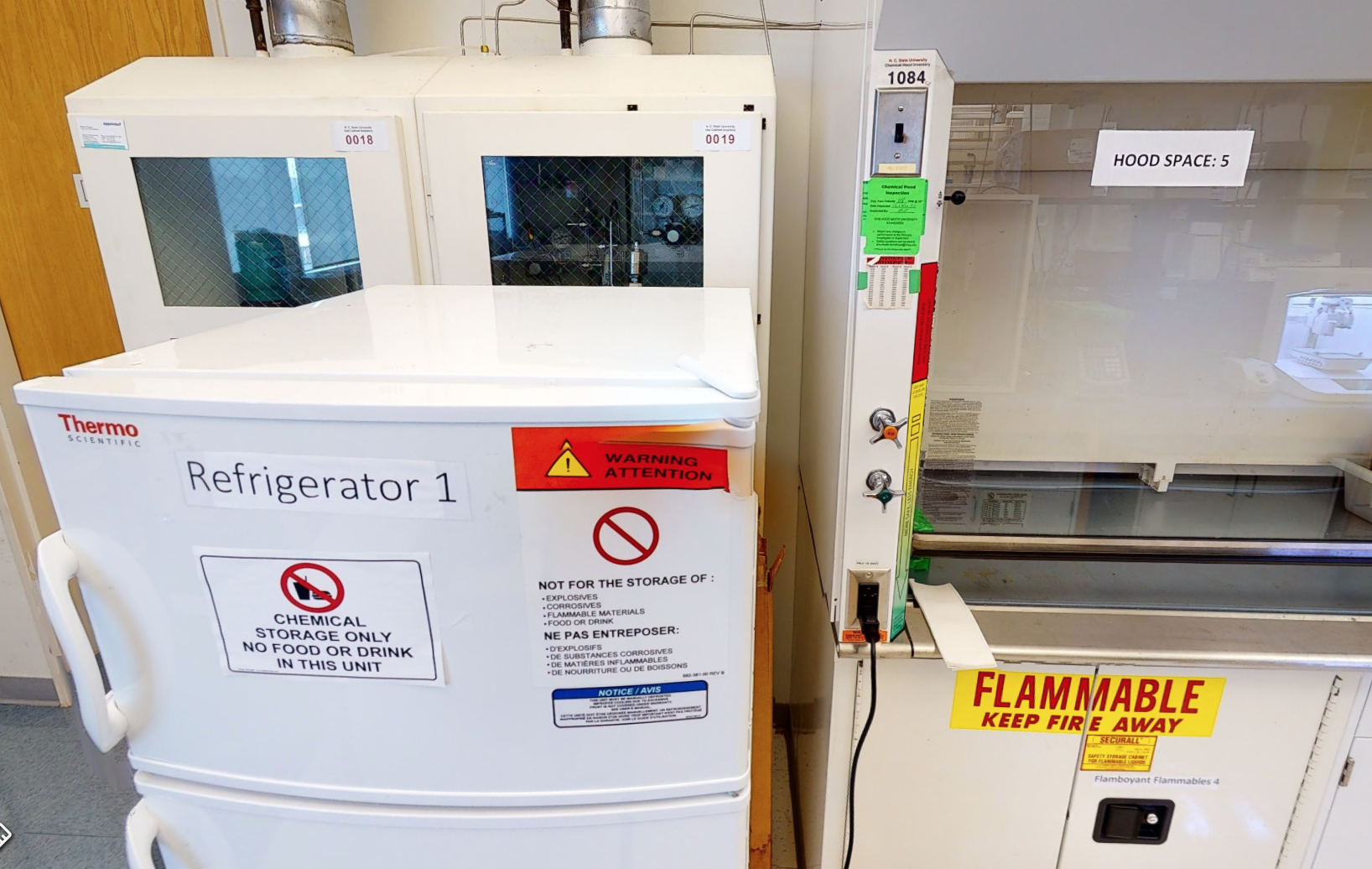
Dickey has other hopes for the future as well. Occasionally, his team will give lab tours to high school students and visitors, so they are in the process of developing a virtual lab tour geared to a K-12 and high school audience, complete with informative videos and equipment demonstrations. Their next goal is a 3D virtual safety tour for new students and scholars in which safety officers can cover critical safety information at a distance.
With virtual touring, the possibilities are limitless.
“Honestly, this is the software that I’ve been dreaming of because we’ve tried to do this ourselves and it was kind of always clumsy. It just looks so nice, so intuitive and so easy to use.”
Could your students benefit from an immersive experience like the Dickey Lab? Do you wish you could bring your students along to educational locations or spaces? Apply for a Virtual Tours DELTA Express Grant!
The proposal submission system opens on Aug. 2 and closes on Aug. 13. For more information, visit our website or email deltaexpressgrants@ncsu.edu with specific questions.
This post was originally published in DELTA News.
- Categories:
